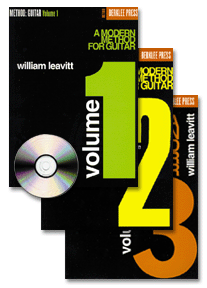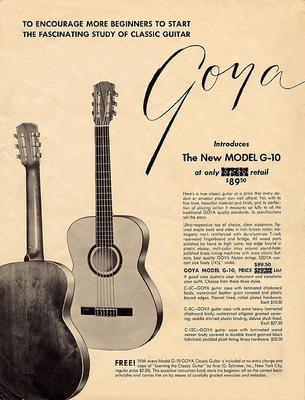 Leavitt, in "Modern Guitar Method" is not CAGED. For those who don't know, the CAGED system is based around the open-string "cowboy chords" in the first position, building scales and arpeggios off of these shapes -- the C, A, G, E and D major chords, moving them up and down the fingerboard to hit every other key. Worked for Joe Pass and plenty of others. Is Leavitt too complicated to be useful? Does the CAGED system rely too heavily on visualizing shapes and not enough on note awareness?
Leavitt, in "Modern Guitar Method" is not CAGED. For those who don't know, the CAGED system is based around the open-string "cowboy chords" in the first position, building scales and arpeggios off of these shapes -- the C, A, G, E and D major chords, moving them up and down the fingerboard to hit every other key. Worked for Joe Pass and plenty of others. Is Leavitt too complicated to be useful? Does the CAGED system rely too heavily on visualizing shapes and not enough on note awareness?You can't get away from either one. The guitar is a visual instrument. You're going to see patterns -- they're there, and you can't avoid them. But coupling the visual and technical with genuine note awareness is key, I believe, to mastering the instrument and to musicality in general.
As far as note awareness goes, I think I'm solid up to the 8th fret, and everything on the 12th and later is just a repeat of the open strings and the lower frets, so it's the 9th through 12th frets where I need the most work. Thinking of the 11th fret as a half-step below the 12th makes that one easier. Just playing everywhere on the neck is the way to get around this, and that is where Leavitt is useful. By Vol. 3, you are all over the fingerboard -- that's when you really start hitting his method of position playing. It's a bit boggling, but for major scales, you can basically call on a Leavitt fingering to play in all 12 keys without moving from a six-fret area (as I've said previously, he calls for lots of 1st- and 4th-finger stretching).
Whether or not you could ever identify all of these ways to play a major scale, Leavitt Vol. 3 gives you quite a sight-reading and position-playing workout, playing through all keys in a single position and playing in a single key all the way up and down the fingerboard. It's a difficult but potentially rewarding way of learning the entire guitar and getting the sounds you want from as many places as possible.
One thing about Leavitt that causes controversy is all the stretching that's involved. I think some players just don't want to do all that 1st- and 4th-finger stretching, and there are plenty of fingerings that avoid it. Shifting positions also does this. Jimmy Bruno's "Six Essential Fingerings" also shies away from those stretches. And I remember seeing something in Just Jazz Guitar magazine that pushes note awareness and forbids the visualization of scale fingerings entirely (don't know how that one works).
I honestly don't know what's best here, but knowing the notes AND having some muscle memory as to how to make them can't hurt.



